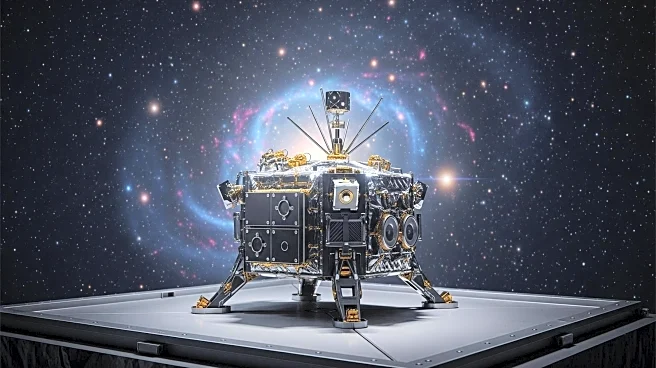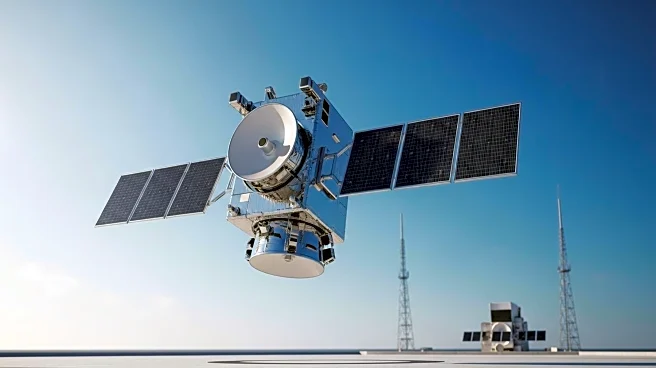What's Happening?
NASA researchers have developed a method to efficiently provide pixel-level spectral error covariance in satellite ocean color products. The approach involves using a third-degree polynomial to approximate the error covariance matrix, significantly reducing file sizes without compromising data quality. This method addresses the challenge of delivering large data sets from hyperspectral imaging spectroradiometers, such as the Ocean Color Instrument on NASA's PACE mission. By using polynomial fitting, the memory overhead is reduced, making it feasible to handle large data files. The approximation has been tested with MODIS data, showing minimal differences in derived ocean color products.
Why It's Important?
This development is crucial for advancing remote sensing technology and improving the accessibility of ocean color data. By reducing file sizes, researchers can more easily manage and analyze large data sets, facilitating better monitoring of oceanic conditions and environmental changes. The method enhances the efficiency of data processing and storage, potentially benefiting various stakeholders, including environmental scientists, policymakers, and industries reliant on ocean data. It supports ongoing efforts to understand and address global challenges such as climate change and marine ecosystem health.
What's Next?
The implementation of this polynomial approximation method will likely be integrated into future satellite missions and data processing protocols. Researchers may continue to refine the approach, exploring its application to other types of remote sensing data. Collaboration between NASA and other scientific institutions could lead to further innovations in data management and analysis. The broader scientific community may adopt similar techniques to improve the handling of large-scale environmental data.










